#Start singing a jaunty Caribbean song
Explore tagged Tumblr posts
Text
Someone really needs to use this movie to make memes and crack videos every other thing they say and do is fucking wild
youtube
How did I not realise how batshit crazy this movie was when I watched it as a child
#what were they on#the pharaoh is an Elvis impersonator#scantily clad women#and men#your brother gets accused of theft#Start singing a jaunty Caribbean song#cuddling dead goat#what the fuck#joseph and the amazing technicolor dreamcoat#children’s movie#bible#the blue trainers#why does this exist#idk how to tag this#seriously wtf#Youtube
4 notes
·
View notes
Text
Hamilton: Ranking Every Song from the Soundtrack
https://ift.tt/2YTCryx
Imagine the experience of being one of the first individuals to see Lin-Manuel Miranda’s now-classic Hamilton: An American Musical live.
The first thing you notice is the spartan, largely empty stage. Then as Leslie Odom Jr. takes the stage as Aaron Burr followed by Miranda’s Hamilton, you realize that this production about America’s founding fathers is made up almost exclusively of People of Color. That’s a lot to take in from the start. At a certain point, however, you’re bound to realize that the play is about 40 minutes in and The. Music. Has. Not. Stopped.
In addition to its many ingenious quirks and hooks, Hamilton is truly a musical musical. Miranda’s book and lyrics about one of the country’s most colorful and impressive founders has a lot of ground to cover. And it does so at a musical sprint with almost no expository time-wasting in-between.
As such, the Hamilton soundtrack is a staggeringly impressive piece of recent culture. At 46 tracks spread out over nearly two and a half hours, this album closely replicates the experience of a show most could never get a ticket to live. A passionate, thriving Hamilton fandom rose up out of that soundtrack and it continues through to this day.
Now, with Hamilton about to be more accessible than ever by joining Disney+, we decided to rank all 46 of those tracks.
46. Hurricane
The hurricane that ravaged Alexander Hamilton’s Caribbean island home of St. Croix was a crucial part of his life and led to him securing passage to the United States. But the song “Hurricane” uses the storm late in the play as a tortured metaphor for his turbulent public life. It’s undoubtedly the least energetic and weakest full song on the Hamilton soundtrack.
45. Farmer Refuted
“Farmer Refuted” does well to capture a young Hamilton’s rhetorical brilliance early on in the play but doesn’t hold up well against other, more fully crafted tunes. Hercules Mulligan mumbling “tear this dude apart” is certainly a soundtrack highlight though.
44. The Story of Tonight (Reprise)
What would any Broadway musical soundtrack be without a reprise or two? “The Story of Tonight (Reprise)” is certainly fun. But, ultimately, tales of Hamilton’s legendary horniness would have been better suited with a full song.
43. Schuyler Defeated
Just about every line of dialogue in Hamilton is sung… including heavily expository moments like Burr defeating Hamilton’s father-in-law in a local election. The subject matter and lack of true musical gusto makes “Schuyler Defeated” one of the least essential tracks in the show.
42. We Know
It’s a testament to how strong the Hamilton soundtrack is that a song like “We Know” could appear this low on the list. This account of Jefferson and company informing Hamilton of what they know is quite good; it just pales in comparison to the song in which they uncover Hamilton’s misdeeds.
41. It’s Quiet Uptown
This is sure to be a controversial spot on the list for this much-loved ballad. “It’s Quiet Uptown” is indeed composed quite beautifully. It also features lyrics that seem to be almost impatient in nature – as though the song is trying to rush the Hamiltons through the grieving process to get back on with the show.
40. Take a Break
Part of the miracle of Hamilton is how the soundtrack is able to turn rather mundane concepts and events in Hamilton’s life into rousing, larger-than-life musical numbers. “Take a Break” is charged with dramatizing the notion that Hamilton simply works too much with a sweetly melancholic melody. It does quite a good job in this regard but naturally can’t compete with some of the more bombastic songs on the list.
39. Stay Alive
Set in the brutal dredge of the Revolutionary War, “Stay Alive” is a song about desperation. And between its urgent piano rhythm and panicky Miranda vocals, it does quite a good job of capturing the appropriate mood. It also feels like one long middle with no compelling introduction or conclusion.
38. Best of Wives and Best of Women
Talk about “the calm before the storm.” “Best of Wives and Best of Women” captures one last quiet moment between Alexander and Eliza before Aaron Burr canonizes his one-time friend to the $10 bill. It’s brief, lovely, and effective.
37. The Adams Administration
Hamilton wisely surmises that the best way to introduce audiences to new eras of its title character’s life story is through the narration of the man who killed him in Aaron Burr (Leslie Odom Jr.). Odom Jr.’s real flare for showmanship turns what could be throw-away intros into truly excellent material. It also features a hilarious nod to Sherman Edwards’ 1776 musical when Hamilton says, “Sit down, John” and then adds a colorful, “you fat motherf***er!”
36. A Winter’s Ball
Again: Burr’s monologues are always a welcome presence in these tracks. And in “A Winter’s Ball,” he does some of his best work by setting up Burr and Hamilton’s prowess… “with the ladiessssss!”
35. Meet Me Inside
Despite a brief running time, “Meet Me Inside” is able to establish George Washington’s general bona fides and Hamilton’s daddy issues in equal measure.
34. Your Obedient Servant
“Your Obedient Servant” is Hamilton’s loving ode to passive aggression. In just two minutes and thirty seconds, you’ll believe that two grown men could somehow neg themselves into a duel via letter-writing.
33. The Reynolds Pamphlet
You know that old adage of “he could read out of a phonebook and it would be interesting?” Well Hamilton basically does that with “The Reynolds Pamphlet.” The ominous music injects real import into the simple act of writing that would upend the Hamilton family’s lives.
32. That Would Be Enough
Eliza’s refrain of “look around, look around at how lucky we are to be alive right now” recurs at the beginning of “That Would Be Enough” in a truly touching way. This song is a real tonal whiplash from the revolutionary battles and duels that precede it, but it is ultimately strong enough to bring the focus back to Alexander and Eliza and not just the hectic world they inhabit.
31. The Story of Tonight
“The Story of Tonight” is both a clever drinking song among bros and a subtle setup for the show’s larger theme of one’s story being told after they’re gone. The song is both affecting and effective, just a little too short to stand out and make big waves on our list.
30. Blow Us All Away
“Blow Us All Away” is a fun, jaunty little ditty from Anthony Ramos’ Philip Hamilton. It rather ingeniously incorporates the young Philip’s own musical motif before ending in tragedy.
29. Stay Alive (Reprise)
It’s hard for any song to emotionally contend with the death of a child in under two minutes but “Stay Alive (Reprise)” does a shockingly good job. There’s a real sense of urgency to the music before it settles in for poor Philip to say his final words.
28. Burn
Musically, “Burn” is not one of the better ballads in Hamilton. Lyrically, however, its power is hard to deny. Phillipa Soo does a remarkable job communicating Eliza’s pain at her husband’s betrayal. More impressive is how she communicates the only way to work through that pain, which is through burning all of his personal correspondences and writings to her.
Read more
Movies
Hamilton Movie: Meet the Original Cast
By David Crow
Culture
Hamilton Movie Censors F-Bombs for Disney Plus
By David Crow
27. The Election of 1800
Hamilton is the rare musical where one character can sing “can we get back to politics please?” and the audience’s response is “hell yeah!”. The show is uncommonly good at dramatizing boring political processes, and “The Election of 1800” is no exception. The song builds up to a pseudo-reprisal of “Washington on Your Side” in a shockingly effective and cathartic way.
26. History Has Its Eyes on You
“History Has Its Eyes on You” is a powerful recurring phrase through the entirety of Hamilton. Each and every time the concept comes up in a song, it truly stands out. Strangely though, the song that bears its name is only in the middle of the pack in terms of the show’s numbers. Perhaps it’s because it occurs near the middle of the first act, before we can properly appreciate its heady themes?
25. Aaron Burr, Sir
One of Hamilton’s most charming traits is how readily it acknowledges what an annoying pain in the ass its lead character can be at times. “Aaron Burr, Sir” is literally the second song of the entire musical and helps establish its playful tone as much as the bombastic opening number establishes a deadly serious one.
24. Guns and Ships
Ballads are nice. “I want” songs are nice. Recurring motifs are nice. But sometimes you need a song that just goes hard. Thanks to “America’s favorite fighting Frenchman” that’s what “Guns and Ships” delivers. Lafayette actor Daveed Diggs faces an enormous challenge in Act One by filling out the character’s growth in bits and pieces. “Guns and Ships” is the reward, where a fully unleashed (and English-fluent) Lafayette makes it very clear what hell he has in store for the British army.
23. Washington on Your Side
Thomas Jefferson is such a dynamo of a presence in Hamilton that one could be forgiven for forgetting how infrequently he turns up. Jefferson (and Daveed Diggs) is operating at an absurdly high capacity in “Washington on Your Side.” Meanwhile the music has a ball keeping up with the increasingly incensed backroom scheming of Jefferson and his “Southern motherfucking Democratic-Republicans!”
22. Right Hand Man
Thirty-two thousand troops in New York Harbor. That’s uh… that’s a lot. While the second act of Hamilton has to work a little harder to capture the drama of the inner-workings of a fledgling government, the first act is able to absolutely breeze through some truly epic and exciting songs covering the Revolutionary War. “Right Hand Man” is one such ditty that really captures the frenetic urgency of a bunch of up-jumped wannabe philosophers trying to topple the world’s most powerful empire.
21. The Schuyler Sisters
Honestly, “The Schuyler Sisters” deserve better than its placement on this list. It’s just that everything that comes after is such a banger, that it’s hard to justify moving up the dynamic introduction of Angelicaaaa, Elizzzaaaaa… and Peggy.
20. Ten Duel Commandments
Imagine how insane you would sound in circa 1998 explaining that there would one day be a musical about the founding fathers that uses the framework of Notorious B.I.G.’s “Ten Crack Commandments” to describe the duel between Aaron Burr and Alexander Hamilton. Then imagine how insane you would sound when explaining that it was great. “Ten Duel Commandments” doesn’t cover the “big” duel of Hamilton. It’s a teaser for what’s to come. Thankfully it’s a hell of a good teaser.
19. Cabinet Battle #2
Hamilton’s two cabinet battles run the risk of being the cringiest part of the show. Every concept has its stylistic limit, and a rap battle between Alexander Hamilton and Thomas Jefferson should absolutely fly past that limit. Somehow, however, the novelty works and the creativity of Miranda’s writing shines through.
18. Cabinet Battle #1
The two Cabinet Battles are pretty interchangeable on the list. #1 gets the nod because of “we know who’s really doing the planting.”
17. What Comes Next
The trilogy of King George III songs is some of the most purely joyful songwriting on the Hamilton soundtrack. We can dive into the specifics of what really works about the songs in a later entry. For now, know that “What Comes Next” falls the lowest on our list due to featuring only one round of “da-da-da’s.”
16. I Know Him
“I Know Him” also features only one burst of “da-da-da’s.” But it still gets the nod over “What Comes Next” for King George III calling John Adams “that little guy who spoke to me.”
15. Dear Theodosia
Perhaps more so than any other character in Hamilton, Aaron Burr works best on his own. The character (and the man he was based on) plays things close to the vest by design. It’s only through his musical soliloquies that we get a real sense of the guy. That’s what makes “Dear Theodosia” so powerful in particular. Burr wants the same thing for his daughter that Hamilton wants for his son: “Some day you’ll blow us all away.”
14. One Last Time
George Washington owned slaves. Yeah yeah, you can bandy around the usual “bUt He ReLeAsEd ThEm AlL lAtEr In LiFe” all you want. At the end of the day, it’s an inescapable fact for the country to confront. It’s a hard thing for Hamilton, however, a show realistic about America’s flaws but still reverential to its founding story, to deal with. Hamilton presents the George Washington of American mythos for the most part and he strikes an undeniably impressive and imposing figure. To that end, “One Last Time” is one of the most unexpectedly moving songs in the show. Washington is committing one of the most important and selfless acts in American history by stepping aside. Yet there’s a real sense of sadness as the cast chants “George Washington’s going hooo-ooo-ooome.”
13. Non-Stop
“Non-Stop” is an extremely atypical choice for an Act-ender. Hamilton could have just as easily chosen to wrap up Act One with the rebels’ victory over Great Britain. Instead it takes a moment to process that then deftly sets up the rest of its story with “Non-Stop,” which is simply a song about Hamilton’s insane work ethic. The key to the track’s success is how relentless it is, as if it were trying to keep up with and mimic the title character’s pace. Then there are all the usual exciting Act-ending reprisals and recurring motifs to boot.
12. Say No To This
Just as was the case in Hamilton’s life, Maria Reynolds has only a brief role in the show, but her influence casts quite a long shadow. “Say No To This” is a real showcase for both Miranda and Maria actress Jasmine Cephas Jones. This is a devastatingly catchy jazzy number about marital infidelity…. as all songs about marital infidelity should be.
11. Alexander Hamilton
“How does a bastard, orphan, son of a whore / And a Scotsman, dropped in the middle of a forgotten spot / In the Caribbean by providence impoverished / In squalor, grow up to be a hero and a scholar?” our narrator Aaron Burr asks in Hamilton’s superb opening number. A play with so many moving parts, and such a high-concept needs an indelible opening track to convince audiences that the madness that is about to follow is worth waiting for. “Alexander Hamilton” is more than up to the task. This is an exhilarating starter that introduces its audience to all the important characters, themes, and sounds of the show. It also has its lead character spell out his full name in a rap, which somehow ends up being awesome and endearing rather than corny.
10. Wait for It
Just like the rest of us, Burr is the main character of his own story. And the show allows him to tell that story in songs like “Wait For It.” “Wait For It” is an exciting, downright explosive bit of songwriting. It’s every bit the “I want” song for Burr that “My Shot” is to Hamilton. And just like Burr and Hamilton are two sides of the same coin, so too are these two songs. Burr is alone once again in this powerful number. And he uses that privacy as an excuse to loudly… LOUDLY exclaim his modus operandi. He comes from a similar background as Hamilton and he wants mostly the same things as Hamilton. The difference between the two of them is that Burr is willing to wait for it all.
9. The Room Where it Happens
Bless this musical for having a song as brilliant as “The Room Where it Happens” only just being able to crack the top 10. There are hundreds of musicals in which “The Room Where it Happens” would be far and away the standout number. For Hamilton, it’s ninth. “The Room Where It Happens” is another example of the show taking a seemingly bland topic (backroom deal-making) and turning it into something transcendently entertaining for its audience and something transcendently illustrative for its characters. This is the song where the borders between Aaron Burr: Narrator and Aaron Burr: Vengeance-Seeker come down. Burr starts off as a patient observer of what kind of nefarious negotiations go into the building of a country before his frustration slowly builds into the recognition that he needs to be in the room where it happens.
8. Who Lives, Who Dies, Who Tells Your Story
Truly there is no more fitting ending to Hamilton than “Who Lives, Who Dies, Who Tells Your Story.” At its core, this is a play not only about legacy but about the fungible nature of legacy. Alexander Hamilton is gone and we know his story lives on. But who will tell that story? Like any good closing number, “Who Lives, Who Dies, Who Tells Your Story” knows the importance of bringing back many of the play’s core concepts and characters. And none of those are more important than Eliza’s assertion that she is ready “to write herself back into the narrative.” In the end, it’s not the revolutions or the pamphlets but the love. And that’s how one finds oneself in the absurd position of crying over the guy on the $10 bill.
7. What’d I Miss?
Lin-Manuel Miranda has described Thomas Jefferson as the show’s Bugs Bunny. Nowhere is that more apparent than in the ludicrously jaunty track that opens up Hamilton’s Act Two. There might not be a more joyful or outright hilarious three minutes in any of the soundtrack’s 46 songs. After several years spent living it up in France, Daveed Diggs’s TJ returns to the United States. The rest of his fellow revolutionaries have moved on to R&B and rap, but Jefferson is still stuck in full on jazz mode. “What’d I Miss” serves as the perfect introduction to a crucial character and the themes of the show’s second half.
6. The World Was Wide Enough
If “Who Lives, Who Dies, Who Tells Your Story” is designed to make the audience cry, then “The World Was Wide Enough” exists to make them gasp. This penultimate song is a truly stunning piece of work. This is a sprawling performance that brings back “The 10 Duel Commandments” in expected yet still emotional fashion. Then at the play’s climactic moment, it cuts out the music entirely to make room for Hamilton’s internal monologue – his one last ride through all the pages he won’t write. Finally it covers the grim aftermath of Burr and Hamilton’s duel as the survivor grapples with what he has done. There is a lot packed into these five minutes of song and each moment is more compelling than the last.
5. You’ll Be Back
If absolutely nothing else in Hamilton worked – if the characterizations were off, if the costumes were too simple, if the “Founding Fathers rapping” concept couldn’t be executed – the play’s two and a half hours all still would have been worth it for this one, tremendously goofy song. King George III (portrayed by Jonathan Groff in the original Broadway production) pops up three times throughout the show to deliver pointed little reminders to the American colonists about how good they used to have it. The first time around is by far the best, in large part because it’s so charmingly unexpected and weird. By the time King George III gets to the “da-da-da” section of his breakup song with America, it’s hard to imagine anyone resisting the song… or the show’s charms.
4. My Shot
While “You’ll Be Back” may go down as the most enduring karaoke song from Hamilton, “My Shot” is almost certainly the play’s most recognizable and iconic tune. Every musical needs an “I want” song in which its lead articulates what they want out of this whole endeavor. Rarely are those “I wants” as passionate and thrilling as “My Shot.” This was reportedly the song that Miranda took the longest to write and it’s clear now to see why. Not only is “My Shot” lyrically and musically intricate, but it does the majority of play’s heavy lifting in establishing Hamilton as a character. Just about everything we need to know about Alexander Hamilton and what drives him is introduced here. And the work put into “My Shot” makes all of its recurring themes and concepts hit so much harder in the songs to come.
3. Yorktown (The World Turned Upside Down)
In many ways, “Yorktown” benefits from the precedent that earlier songs like “My Shot” established. This is a song that puts energetic renditions of previous lines like “I’m not throwing away my shot” and “I imagine death so much it feels like a memory” to grand use. But for as much as “Yorktown” deftly invokes Hamilton’s past, what makes this song truly special is how solely focused it is on the present. To put it quite simply: “Yorktown” goes hard. It is fast, harsh, chaotic, and thrilling. This is the song that captures the moment that American troops defeated the British empire and “the world turned upside down.” It’s to the song’s immense credit that the music and lyrics capture the enormity of the moment. Also, there’s “stealing the show” and then there’s what Hercules Mulligan (Okieriete Onaodowan) does here in “Yorktown.” We’re in the shit now, and Hercules is loving it.
2. Helpless
��Helpless” might be pound for pound the best musical moment in all of Hamilton. It’s a simple, seemingly effortless love song that, even removed from the context of the show, would sound beautiful coming out of anyone’s car radio on a lovely summer day. Within the context of the show, it’s even better. It acts as a rare moment of celebration for all the characters involved before the Revolutionary War really gets churning and before a young America needs capable young Americans to guide it. What makes “Helpless” truly great, however, is the song that follows it…
1. Satisfied
Wait, wait… why is Angelica saying “rewind?” Why do we need to rewind? We had such a lovely night! The transition between “Helpless” and “Satisfied” is Hamilton’s greatest magic trick. The former presents a night of unambiguous love and celebration. Then the latter arrives to teach us that there is no such thing as “unambiguous” in Hamilton. In a truly remarkable performance, Angelica Schuyler (Renée Elise Goldsberry) teaches us what really happened the night Hamilton met the Schuyler sisters. Angelica will never be satisfied, and it’s because she’s “a girl in a world in which (her) only job is to marry rich.” Hamilton and Eliza’s story is a love story. But it’s also a story of Angelica’s loss. “Satisfied” imbues the musical with a sense of subtle melancholy that it never quite shakes through to the very end. “Satisfied” is the emotional lynchpin of Hamilton, and as such also its very best song.
The post Hamilton: Ranking Every Song from the Soundtrack appeared first on Den of Geek.
from Den of Geek https://ift.tt/2ZFRzyW
1 note
·
View note
Text
XXIII: 1923
On Irreducibile Particles, Rapid Assimilations, and Molasses Funks
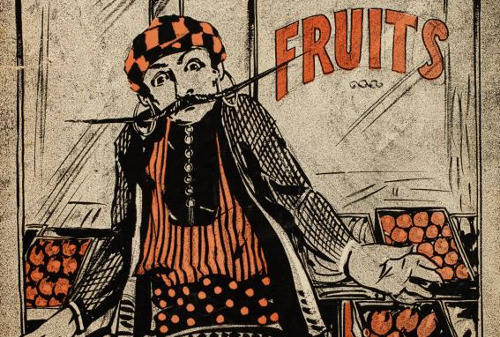
1. Billy Jones: “Yes! We Have No Bananas”
One of the four or five irreducible particles of the silliness of the Roaring Twenties, the folly of the années folles, the glitter of the Goldene Zwanziger, the keynote and image of all that was evanescent and soon to vanish, like champagne bubbles, in the era to come. A vaudeville routine sold as a Tin Pan Alley ditty, with a stop-start melody and nonsense refrain that captured a bluff, jaunty mood and lent itself to repetition, sawing relentlessly away with or without the lyrics kidding the incomplete Americanisms of the Lower East Side. But that kidding remains, a none too subtle reminder that the white majority would never consent to seeing immigrants as fully human. Nonsense in the United States is always political; perhaps that too is not unique to us.

2. Clay Custer: “The Rocks”
The consensus among jazz scholars is that Clay Custer is most likely a pseudonym for the tune’s composer, but there are a few other Chicago-area pianists it could be, including his brother Hersal. Regardless, it’s the first disc on record to feature a walking bassline (so early in its development that it’s almost a stumbling one); this, combined with the previous year’s publication of “The Fives” from the same pen, is the birth of boogie-woogie piano. By decade’s end, the genre will have been fully formalized by pianists who all point to the work of Arkansas-born, New Orleans-trained, Chicago-adopted “Gut Bucket” George Washington Thomas as fundamental. Even apart from the all-important bassline, the chromatic opening trills and development of its themes—the rocks could be wave-dashed, or more euphemistic—give delight.

3. King Oliver’s Creole Jazz Band: “Dipper Mouth Blues”
Seven years is a long time in pop, which hot jazz still is. The gap between the Original Dixieland Jass Band’s first recordings and the first sides made by Joe “King” Oliver’s band—who would undoubtedly have been one of the ODJB’s primary inspirations back when New Orleans was the quarantined heart of jazz, before it spread like a virus to infect the entire nation—would have been noticeable in any era, but a comparison between the two reveals that while the white boys got the energy and the raucousness right, they missed the funk and the communal interplay. Oliver’s muted trumpet solo isn’t just virtuosity: it responds to and is responded to by the rest of the band, including the young second cornettist, recently arrived to Chicago from New Orleans.
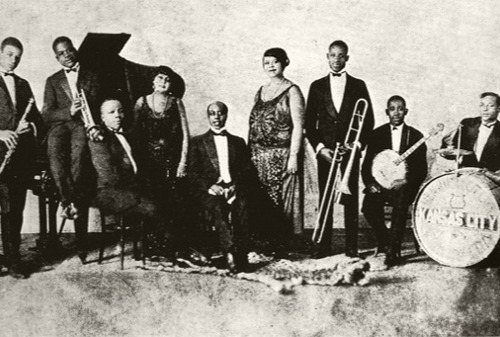
4. Bennie Moten’s Kansas City Orchestra: “Elephant’s Wobble”
And just as the first true New Orleans jazz is waxed, so too is the first true Kansas City jazz: less molasses funky, more brightly riffed, with a hard-stomping rhythm that presages much industrialized pop to come, from Motown to techno. Bennie Moten, a nearly thirty year old pianist, composer and now bandleader who had knocked about the Missouri ragtime scene since his youth, scored his first recording date in St. Louis, with a band of Kansas City luminaries who individually hearken back to older forms, from Sousa’s drilled marches to Joplin’s ragtime of theme and recapitulation to Ossman’s savagely strummed minstrel banjo: but together, powered by the newly hot-running engine of jazz, they produce a gleeful, entirely modern sound that piledrives, lean and hungry for rhythm, into the future.
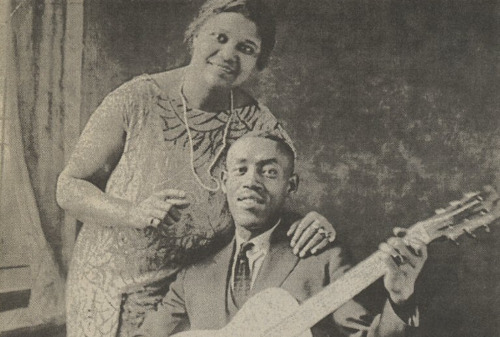
5. Sylvester Weaver: “Guitar Blues”
Most discographies will note this as the first country blues record; but Sylvester Weaver was born and reared in Louisville, Kentucky, which if it wasn’t a New York-scale metropolis was still no dirt-road waystation; nor is it the Deep South. Like most of his Black peers making their way before recording horns in the years before the electric-recording boom, Weaver was an urban entertainer—his first recordings were as an accompanist to blues singer Sara Martin. His instrument was called a “guitjo,” a banjo body strung like a guitar, and his slide technique sounds particularly otherworldly on its resonant body. The technique has appeared before, as played by Hawaiʻian musicians and white southerners; but here the sound connects (on record) to the blues, and the echoes from it will be lasting.
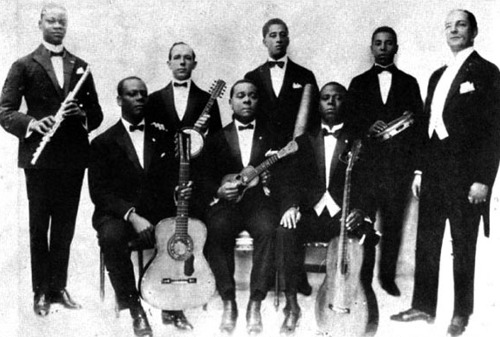
6. Os Oito Batutas: “Urubu”
We have heard the most prominent soloist in this supergroup before: choro composer and flautist Pixinguinha had already left his mark on Brazilian popular music in the 1910s. But when he joined seven other Black and mulatto choristas to form an eight-man group in 1919 so that a theater empresario would have an attraction in between showings of silent films, the result was a music that swung harder than traditional choro and even outpaced early samba: “Urubu” (the Guaraní word for vulture, and you can hear a wheeling, wing-fluttering flight in Pixinguinha’s flute) is just as modern, as dynamic, and as future-facing as any New Orleans jazz. In fact, musicians like Os Oito Batutas (the eight legends), demonstrate that the spirit of jazz was never exclusively a North American phenomenon.

7. Rosita Quiroga: “Sollozos”
Two legends in the field of Argentinean tango make their debut with this recording: Rosita Quiroga, the music’s first great woman singer, born in the lower-class milieu to which a cosmopolitan like Gardel only pretended; and Osvaldo Fresedo, the song’s composer, who when he begins to record in his own right will become perhaps the most emblematic tango bandleader of the decade, with a long career to follow. “Sollozos” (Sobs), with a lyric by the composer’s brother Emilio, is one of the great tango songs, uncovering the everyday pathos within the music’s slinky passion. Quiroga’s direct, unadorned vocal style refuses self-pity even as her words ask us to pity her, and the harmonium which opens the recording casts the plucked guitars which accompany her throughout in the light of eternity.

8. Carlos Gardel: “Alma porteña”
But as tango branched out into newly classed and gendered forms, Gardel the eternal cosmopolite continued to go from strength to strength. “Alma porteña” (Soul of Buenos Aires) is another of the deathless tango songs, in which the music itself is apostrophized as the cause, and cure, of all man’s ills. The mellifluous self-assurance in his baritone voice, the intricate backing of his accompanists Barbieri and Ricardo, and the swooping, tantalizing melody from Vicente Greco, who had been writing and performing tangos since the early 1910s, make a dazzling, almost overwhelming display of what I think of as Baroque tango, tango at its most self-important, self-mythologizing, and capital-r Romantic. If tango is une force qui va and Gardel is its prophet, why should we ever ask for anything more quotidian?

9. Bessie Smith: “Baby Won’t You Please Come Home Blues”
Three long years after the record companies learned that there was a market for “race” (for which see blues) records, the most famous and well compensated blues singer on the Black vaudeville circuit finally signed a contract with Columbia to cut her first records, accompanied on piano by early jazz pianist and empresario Clarence Williams, who had published (and supposedly co-wrote) this song. Its co-composer, Charles Warfield, later complained that he was cheated, which was probably true enough: music labels had much to learn from sheet-music publishers on how to screw over their talent. But the song itself is just a trifle: what makes it stick is Bessie Smith’s full-lunged performance, too self-possessed to be melodramatic about missing her lover, but too serious about her heartbreak to treat it flippantly either.

10. Ma Rainey with Lovie Austin and Her Blues Serenaders: “Barrel House Blues”
The blues singer who taught Bessie Smith to perform in public, and whose popular performances since the early 1900s in medicine shows, minstrel shows, and vaudeville had no doubt influenced white singers from Sophie Tucker to Marion Harris, also cut her first records for Paramount in 1923, at the age of forty-one. Accompanied by Chicago-based pianist and composer Lovie Austin and her hot jazz band, Rainey sings three verses that mock at Prohibition while reinforcing her own status as the elder stateswoman of the blues: the “Papa” of the song is presumably is Will Rainey, her husband, manager, and one-time partner, while “Mama” is herself, a creature of voracious appetite whose addiction to port, sport, gin, and “outside men” is a thorough rejection of a respectability that couldn’t touch her.

11. Esther Bigeou with Piron’s New Orleans Orchestra: “West Indies Blues”
Anglo-Caribbean music has not appeared in these pages since 1915, but it didn’t go unheard, nor was its influence insignificant. “West Indies Blues” was written by the great Black jazz songwriter Spencer Williams, with funning lyrics by Edgar Dowell, in the wake of Jamaican-born Pan-African Black separatist Marcus Garvey’s conviction on trumped-up charges of mail fraud: the broad dialect Esther Bigeou, a New Orleans native, uses to caricature West Indian speech is, at this remove, indistinguishable from the Coon dialects white songwriters had been putting in the mouths of US-born Blacks for generations. Even so, the sheet music was subtitled “a calipso,” and though it’s not proper Trinidadian calypso, it’s played by people who have heard it: Armand Piron’s orchestra was one of the foremost Creole bands of New Orleans.
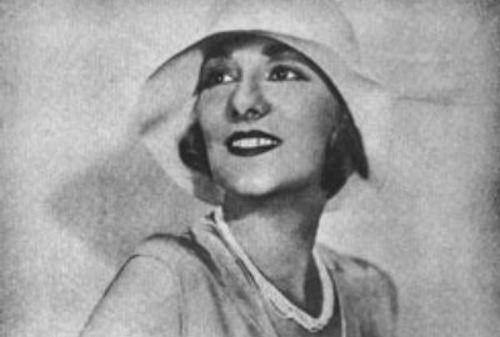
12. Marion Harris: “Who’s Sorry Now?”
As the genuine articles began to take their rightful place before the recording horn, the white women whose imitations of blues shouters had made the racist recording market safe for the blues began to move into more genteel forms of music-making, where Black women presumably couldn’t follow. (We’ll see about that.) Marion Harris, a constant presence here since 1916, has never sounded more polished and inexpressive—which is to say, whiter—than when warbling this ditty by dilettante composer Ted Snyder (who we won’t see again) and Tin Pan Alley lifers, lyricists Bert Kalmar and Harry Ruby (who we will). A song of vindictive triumph paced like a parlor ballad, it retained enough kick thirty-five years later to jumpstart the career of a teenager who sang like a grown woman.
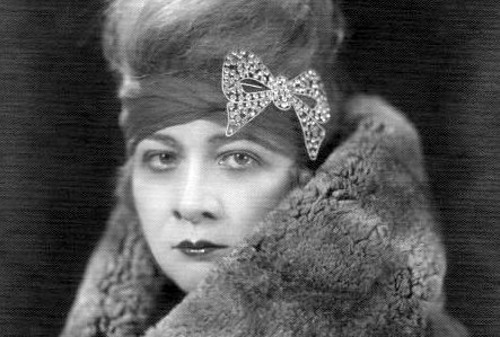
13. Sophie Tucker: “You’ve Gotta See Mamma Ev’ry Night (Or You Can’t See Mamma At All)”
Of course, La Tucker never followed the trends for white women singers. Now in her mid-thirties, she had built too firmly on a foundation of Coon shouting to move blithely into sweet girlish Tin Pan Alley fluff: but raucous faux-blues Tin Pan Alley fluff would do just as well. “You’ve Got to see Mamma” was written by popular hack Con Conrad (empresario Billy Rose is credited on lyrics), and in general outline it’s a good imitation of contemporary Black women’s songs, slightly saucy, humorously aggressive towards a wayward lover, and firmly self-respecting. But there’s no actual blues structure or emotion to it, which makes it all the better as a cloak for the indeterminately-raced Tucker to wrap herself in: big and brassy, but ultimately respectful of show-biz and social convention.
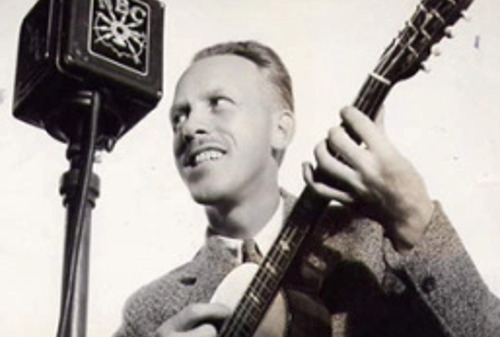
14. Wendell Hall: “It Ain’t Gonna Rain No Mo’”
The ways in which the desiccated remains of minstrelsy were shaped and pounded into country music are a major part of the recording history of the 1920s. “Ain’t Gonna Rain” is considered a folk song (four years later, Carl Sandburg would suggest that it dates to the 1870s), but Hall, a Midwestern vaudevillian who performed under the legend “The Red-Headed Music Maker,” punches out the verses, with nonstandard vocabulary and Southern rural hokum straight out of Uncle Remus, in a minstrel-inflected screech and yowl, a sound which would migrate into the “high lonesome” style which will characterize honky-tonk. But he’s also very much of his time: his instrument was not the banjo but the ukulele, the portable if not particularly versatile instrument which gave a fizzy, irrepressible soundtrack to the 1920s.
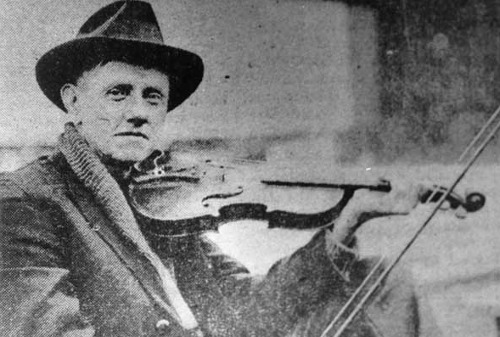
15. Fiddlin’ John Carson: “The Old Hen Cackled and the Rooster’s Gonna Crow”
Après Eck, le deluge: country fiddlers were still major entertainers in the rural communities where they set and called the dances, and as the South urbanized, they grew into bigger stars thanks to old-time fiddling conventions. The fifty-something Carson, of Atlanta, was hot enough stuff that he was a local fixture on the new medium of radio and appeared in newsreels. A sharp-eyed Atlanta distributor cajoled Okeh’s talent scout Ralph Peer into recording him in a rare acoustic-era location recording, a makeshift studio set up in an empty Atlanta storefront. Peer wasn’t happy with the results (he’d do better later), but the record, “Old Hen” b/w “Little Old Log Cabin in the Lane” (see 1907), sold out at the next convention. No hero, as we’ll see, Carson nevertheless lasted.
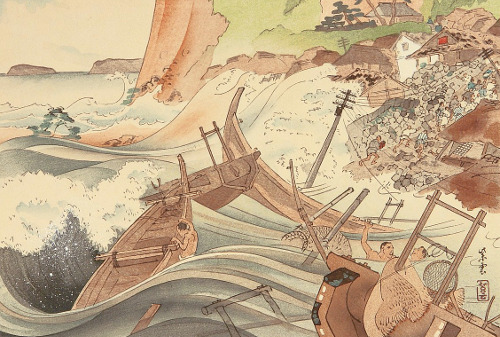
16. Asako Tanabe: “Sendo kouta”
As country music slowly pushes its way onto record, so too does the music frequently compared to it: Japanese enka, which (like country) originated in a specific milieu but has since broadened to mean any vaguely folkloric or traditional popular music. I’ve been unable to learn anything about the singer attributed here: 田辺朝子 is a common enough name that basic online searches are useless. But 船頭小唄 (often translated as “Ferryman’s Song”) was a major musical touchstone of the era, a street song which borrowed the melody of a Shinpei Nakayama composition. It became infamous in the wake of the Great Kanto Earthquake, said to have been predicted in the haunting, death-obsessed lyrics. A sentimental 1923 film of the same title inspired multiple recordings; this is the one posted to YouTube.

17. Mounira al-Madiyyah: “Asmar malak ruhi”
1923 was the first full year of nominal Egyptian independence from the British “protectorate” which had begun in 1882 and was formalized during the War to break Ottoman power. Although the British occupation would not be entirely ended until 1953, the promulgation of the first constitution and the convention of the first parliament in Cairo is worth commemorating here, with the voice of the first Muslim woman in the modern era to come to prominence as an entertainer in Egypt: before her (as throughout North Africa and the Middle East), the profession was limited to Jewish and Christian women. أسمر ملك روحي was one of her signature songs, one that has had long echoes in Egyptian light-entertainment history: “Dark King of My Soul” is one way to translate the title.

18. Mohammad el-Wahab: “Ma niish bahebbek”
Egyptian popular music was still only just being born: the September 1923 death at the age of 31 of café singer and musical-theater composer Sayed Darwish, whose melodies (some of which we will hear in future) borrowed Western structures and sometimes instrumentation in a break with classical Arabic formulas, is a useful demarcation point. Mohammad el-Wahab was a friend and close collaborator with Darwish in his last years, and would become perhaps the most important Egyptian popular musician of the twentieth century, but one. This early song, a light taqtuqa from the kind of genial musical romantic comedy which would come to form the backbone of the West and South Asian film industry, is an anti-love song performed in character as a rascal protesting (too much) that he only loves himself.

19. Marika Papagika: “Opou dis dio kyparissia”
The Anatolian Greek singer Marika Papagika was by now more or less the undisputed queen of the ex-Ottoman diaspora in New York City, despite continued challenges from Kiria Koula. Within the next year or so she would even open the first café-aman (and behind authority’s back, a speakeasy) in the Western hemisphere; but here, with her husband on cimbalom and other immigrant musicians on violin, cello, and percussion, she sings a song which takes its title from the Greek folk air “When You See Two Cypresses,” but hares off in other directions in the singing. It’s called a Zeïmpekiko (Anatolian Greek folk dance) on the label, but scholars, noting the modern fusions which New World residence has imparted to Papagika’s musical ecosystem, have called it an early example of rebetiko.
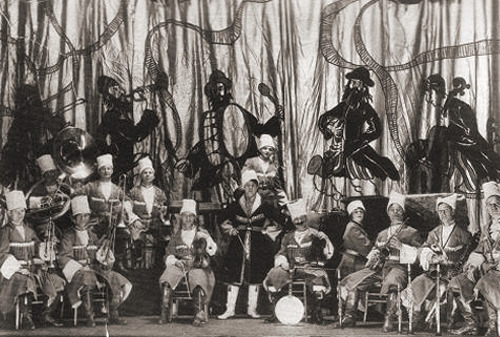
20. Naftule Brandwein’s Orchestra: “Doina and Nachspiel”
As we move further into the 1920s, the number of great recordings by the Eastern European Jewish artists who brought what we now call klezmer to the tenements of New York City will slowly decrease. Partly this is because of rapid assimilation and the inroads made by Jewish artists into mainstream US culture: the next generation of talented Jewish musicians were more likely to aspire to be Gershwin or Brice than Brandwein or Picon. But also, beginning in 1924, the country’s open (to Europeans) immigration policy was for the first time given a permanent numerical limit, heavily restricting (as it meant to) the number of new Jewish immigrants to the United States. There will be more klezmer records in future, but let this be a valediction for the first generation.

21. Isa Kremer: “Dwie Guitarre”
But there was a whole constellation of global Jewish culture which the policies set by a know-nothing Congress could not touch. Isa Kremer, the great Russian Jewish soprano, was born to bourgeois parents in what is now Moldova, but was publishing revolutionary poetry in Odessa as a teenager. She debuted as an opera singer in Italy; within a few years, she included Yiddish folk songs in her concert repertoire, supposedly the first woman to do so. The Russian Revolution left her without a home (her family had backed the moderates), and her peripatetic concert schedule brought her to the United States in 1922, where she was acclaimed by Jewish and non-Jewish audiences alike. This selection of Russian romans or “gypsy” music is illustrative of her clear voice and lively style.
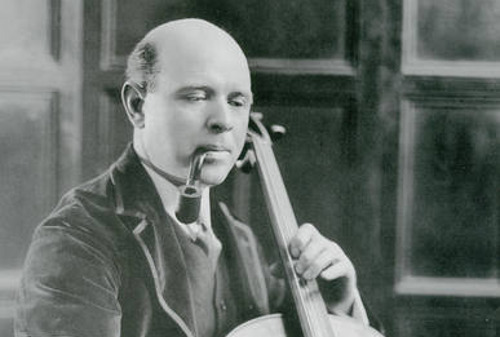
22. Pau Casals: “Kol Nidrei”
Another example of Jewish music having entered the concert canon: the German (Protestant) composer Max Bruch had composed this piece for cello and orchestra in 1880, the melody of the first section based on the Hebrew prayer recited during the evening service on Yom Kippur and that of the second on one of Isaac Nathan’s 1815 settings for Byron’s Hebrew Melodies. (Gentiles appropriating Jewish art and being reappropriated by Jews in turn has a long history.) The great Catalan cellist Pau Casals rendered it sensitively, accompanied only by Edouard Gendron on piano, for Columbia in 1923. In those years Casals was the preeminent cellist in Europe, recording in France and conducting an orchestra in Barcelona. An ardent Republican, he went into self-imposed exile when Franco came to power, and never returned.
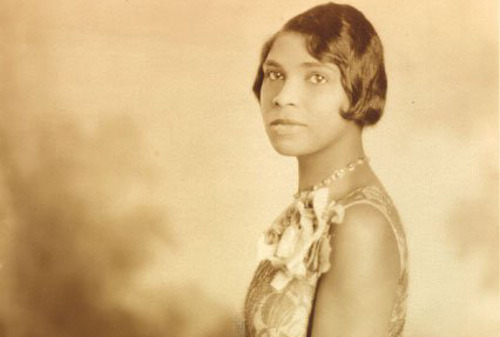
23. Marian Anderson: “Deep River”
Only two years out of high school, and still a decade out from becoming world-famous as the greatest African-American contralto of the twentieth century, Marian Anderson recorded her first sides in December of 1923. Her repertoire even then included this Harry T. Burleigh arrangement of a classic spiritual, which would become one of her signature songs. “Deep River,” with a stark simplicity of melody and lyric which contain entire implied universes of emotion and history, is one of the essential, irreducible elements of Black American art. Anderson’s early low, throbbing performance, recorded the same year that hot jazz and the blues fully came into their own on record, after some fifty years of what historians call the Nadir, an era of horrific violence and terrorism toward Black citizens, still resounds today.
5 notes
·
View notes
Text
Somewhere In The Between
‘And Somewhere in the Between
There’s a Love for which we all Dream,
And Nothing and No-one can ever take that away.’
- Streetlight Manifesto
I return home from a day well spent in London, rehearsing for a recording session for my girlfriend’s EP. She will be paying me for it, which I guess means I’m technically currently a professional session musician, which I find pleasing.
On the train home the people I say hello to actually say hello back and start talking to me. One even plays my drum whilst I play guitar - both surprising and wonderful.
I splay myself down in front my television and eat a pseudo-vegan meal as I watch a 90’s kid’s cartoon called Leo the Lion on my VCR, because somehow the fifteen minutes I spent in Old Street today turned me into a card carrying Hipster. I sink down into my bed with thoughts of music and flames, both old and new, content in the fading tendrils of a day well spent.
Waking life slips away as I find myself swimming in old places and old faces. Reality starts to return to my life, as, ‘with the courage of a clown, or a cur, or a kite jerking tight at its tether’, I drift past palaces and through cheering crowds, and find myself in familiar lands, under the expectant gaze of a billion forgetful eyes.
I am back in New Orleans, in a small dive bar just off Decatur, no bigger than your living room, all dark maroons, low divans and bookshelves, full of the kind of creative service industry types that in London would be Hipsters and in New Orleans would be Gutter Punks. All blacks and browns with too much makeup and too much moustache, or perhaps I am just too naked and hairless.
I am stood by a bookshelf, sifting through the business cards of tattoo artists. Kai Kita. A great one. She did my chest and back. Oh hey Doom Puppy! I think I owe her money.
I turn to the people next to me. A handle-barred hipster and his dark haired companion, both being shown around by Meg.
Meg was an ex-prostitute who lived with Tyger and I a short while, before Tyger got shived in the kidneys for bottling a lesbian in the face, is a phrase I would never have thought I would be able to utter with honesty, had you asked me three years ago.
Meg was short, thin and ginger, with bulbous silver braces over her teeth and tattoos over every part of her body from her face to her feet. A swastika here, a middle finger, a samurai and a swearword there. All violence and vitriol, spewing forth out of an accent so thick with the tones of Boston as to be barely discernible, although I could happily listen to her high-pitched, lyrical cackle and drawl for hours, the same way one might listen to A Survivor From Warsaw, transfixed by the beautiful horror unfolding inside ones earholes.
She had apparently been involved in some kind of kidnapping plot, the details of which elude me, but which I believe may have precipitated her arrival in New Orleans.
‘Hey! You guys want a free tattoo? I owe this chick money.’
The hipsters look confusedly to their guide for guidance.
‘Naaaaahhhh. I’ve got no space left. Why don’t you get one off her?’ Meg splutters to me, all smiles.
‘Oh no, I couldn’t do that’ I splutter back, looking down at one of my tattoos – Let It Go, This Too Shall Pass - ‘I’m not sure I’m still the tattoo kind of guy.’
My three companions exchange knowing glances and smiles, and return to their reading a moment before a bell chimes to announce the beginning of the night’s entertainment. Eagerly, I take a seat on the floor by the entrance amid a packed crowd of maybe six to ten other patrons. Happily, the first act is Meg. She is doing Cabaret! I love Cabaret. She is singing a song of sexy sadness, and stalking, woefully and elegantly waving from side to side as she admits, dramatically yet unsurprisingly, that it was in fact she who snuck into my house to steal the blue cheese from my fridge, the absolute villain.
Suddenly, the music ramps up a notch. It probably changes key and becomes a tango, as everyone in the crowd that isn’t me jumps up into a synchronised dance that they have obviously rehearsed, and obviously not rehearsed enough. I find myself terrified – are they all in on it? Is this all for me? What else might these blaggards have planned? Will I ever go back to using normal words again?!?
Drinks are knocked over and vases shattered as Meg is pirouetted between her supporting cast, lifted this way and that, passed and thrown from side to side, and waved up and down like she were made from flags and string and this were Dirty Dancing.
Meg is found, splayed and drenched across the shoulders of six dancers who barely manage to keep from using her as a battering ram to accost the patrons of the bar one wall over. The music takes a darker turn, as notes of anger and frustration begin to enter. The wall she barely managed to avoid headbutting becomes, rather poetically, with hints of the afore-mentioned blue cheese, symbolic of the emotional wall of her inner spiritual life, or some-such.
She spins down onto her feet, staring at a book that she picks up and drops again, all sweat and hazy Paisley, amidst whispers from her team of dancers.
‘That went well. We didn’t even break her neck this time.’
‘She’s had it – she’s got no more in her.’
‘She’s not serious. She’d never actually do it. She’s all talk.’
‘Like he’ll ever actually notice. He’s not bright enough. Anyway he’s too lazy to actually care.’
All their words start to melt together as familiar songs start to play and old fears start to arise in me. It’s my turn to move. My solo, and I’ve failed too many of these to not notice when it’s my turn to dramatically fail at something.
A screeching of car tyres outside. Meg jerks out of her reverie, looks at me and then past me to the exit, with daggers in her eyes, and starts to sprint, in slow motion.
‘Meg, don’t do it!’ Tears well and chest clutches. Heart chokes as body scrambles over itself, clutching, clasping, for redemption and forgiveness. Not another one. Please God, not another one. This time I can be fast enough. I can be better.
His arms wrap themselves about the girls leg and cling on for dear lives, stopping her from leaving the bar, dragging her to a muddled, joyous, and rather unexpected halt. It’s a little awkward as I look up through tears and pleas to a face looking down at me with disappointment and annoyance, more than anything. at having her big moment ruined. The anger hasn’t been externalised at me yet, unfortunately.
Outside, a car drives itself into the distance as we stare at each other across the space of three thousand miles and about as many emotions. I find myself, unsure of what to do next, wanting to apologise and tell her that this doesn’t normally happen to me. To be honest, I think I’m more used to being the one crying over the mangled body in the street.
It’s funny, I never took Meg for the suicidal kind, back when I was in New Orleans. I wonder what part of me was trying to kill itself. I don’t wonder for very long, though, as that’s a story for another day and another dream, and another crowd - hopefully one exponentially smaller.
Well, the moment is somewhat ruined and we’re all a little bit of the wrong kind of soggy, as the crowd mills about despondently and Meg stomps off grumpily to the other end of the bar, through into another room.
Today though, my solo is to be an extended one it seems, as I hear music begin to mumble its way out of silence and I remember that the other room also has a road-facing-exit.
I clamber over bodies and through treacle to the other room, where I see Meg making another mad dash for an appointment with collision.
Sprinting through the watching crowd, I tackle her to the ground. Straddling her and pinning her arms, I try my hardest to not get turned on nor bitten whilst also trying to work out which is which amidst this snarling heap of hatred and limbs. I remember the sickly fascination and gleaming eyes with which Meg had described to me the traumatic experience of watching her cat get torn apart by Tyger’s massive dogs.
I don’t remember it for long though – soon all my energy is exerted trying to calm and placate this screaming ball of beautiful death. For a second I am reminded of my girlfriend, before I am bitten on the hand and reminded that such thoughts shall be the ones to kill me, in the end.
The music picks up into the jovial waltz one might find in The Sound of Music or Educating Rita, as the bar slows down and around us a brawl breaks out, tumbling bodies colliding and exploding, glass shattering and Jokers being thrown through walls and windows, as tooth digs into skin and eyes turn to red pinpricks of frustration and confusion.
I, on the other hand, am smiling quite amicably, and moving quite slowly, almost elegantly – finally, we’re in a familiar setting, in a key signature whose notes I know well. I can relax a little, as Meg loses her strength and becomes like cute putty.
I begin to sing, with the kind of voice one might use to proclaim the benefits of discovering that their testicles were situated in their ears. It’s a duet, although Meg’s part mostly consists of snarls and well timed shards of eye murder.
Imagine a hauntingly jaunty folk melody. Also imagine that it rhymes, if you will.
‘You could build an orphanage in Ghana! You could climb every building in Peru! You could show Pirates of the Caribbean to every pirate currently in the Caribbean!
‘Did you think I would leave you? From my first brick smoke stack to my last raging fire, did you think I would be the one to let you go? Surely you know me better.
You could learn every song from the 40’s. You could take flowers to the elderly, you could rob a bank, or sell cars, or save strangers, or kill time. You could learn, to move me.’
At the time I had a whole list of similar reasons to choose life, and what’s more, it actually rhymed, but as is always the way with things, I spent too long making testicle jokes and choreographing a scene from Sucker Punch to actually remember the lyrics to a song I found both hilarious and beautiful.
The music fades to a close as, outside the door, we hear a barking noise. Snapping out of our sado-masochistic stupor, we crane our heads around a door with eyebrows raised to see an adorable little sausage dog, barking at passing cars and floating on feet too fast to count. It seems to be looking for food on Decatur Street, oblivious to the inherent danger of being so cute around so many obvious psychopaths. So far most of the cars have managed to avoid hitting it, but I’ll be called Larry if I didn’t see some of those drivers trying to swerve toward the poor thing, when they thought people weren’t looking.
Meg and I untangle ourselves and crawl out onto the side walk to call to the dog and scream at the passing cars, hoping each time that the creature will survive and come towards us.
Finally, he listens, and trots towards us, eyes wide, tongue lolling, lead trailing, tail wagging.
‘Well Done! Good Boy! We’re so proud of you!’ He jumps into our arms and licks our faces as we cuddle and stroke him ecstatically. Somebody fetches some food for the poor thing, and I find myself petting him alone, lost in the moment, as Meg slinks back into darkness, the gleam of her eye leaving a trail in the shadows.
As I feed and pet the wonderful little creature I think of home, and day-life, and how I wish I had a dog, and am dragged from my reverie by the sound of screeching tyres and a sickening thud. I look up, wondering where Meg is.
I awake in my bed. It’s 4.50am, and I have work to do – after all, apparently I’m a writer of some sort, and those were some exceedingly fine lyrics, if I’ll ever actually remember them. It’s a shame about Meg, but I think she would like to hear that she’s been haunting my dreams and caressing me with her dying moments.
Begrudgingly, I clamber out of bed and begin the monumental task of finding the motivation to write something that will never be as good as Monkey and Bear by Joanna Newsom. Or Emily by Joanna Newsom. Or anything, in fact, by Joanna Newsom.
Omid Ezekiel Ramak
0 notes